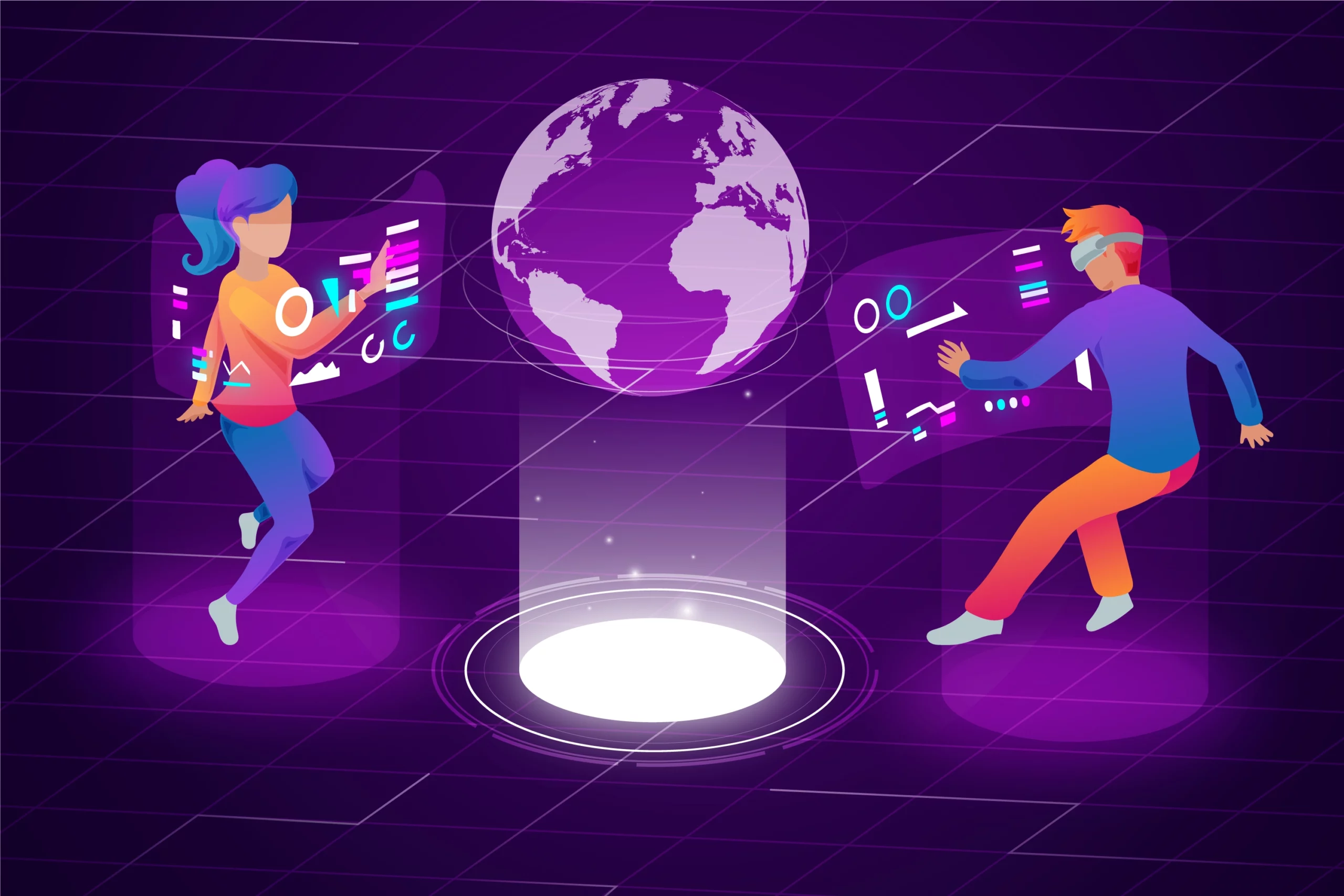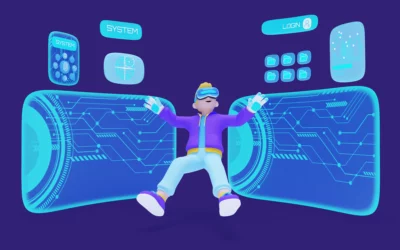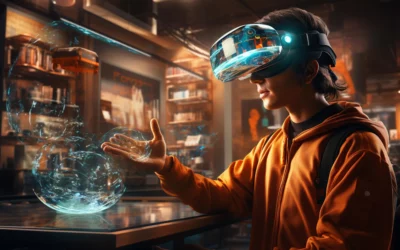Introduction
Gone are the days when the metaverse was just a sci-fi concept. It is swiftly becoming a digital reality, revolutionizing our ways of interaction, work, and leisure activities. With major tech companies investing heavily in its development, the metaverse holds the promise of transforming digital interaction as we know it. Here’s an in-depth exploration of what the metaverse entails, its potential impacts, and how it’s shaping our world.
Understanding the Metaverse
The metaverse is a shared virtual space, resulting from the merging of enhanced physical reality and persisting virtual space. It encompasses augmented reality (AR), virtual reality (VR), and the internet. Essentially, it functions as a parallel digital universe where users can engage with computer-generated environments and interact with other users in real time.
Key Components of the Metaverse
1. Virtual Reality (VR):
-
- Immersive Experiences: VR offers fully immersive interactions within digital environments using VR headsets.
-
- Applications: Utilized in gaming, simulations, virtual tours, and remote work to enhance user engagement.
2. Augmented Reality (AR):
-
- Enhanced Reality: AR overlays digital information onto the physical world via smartphones or AR glasses.
-
- Applications: Widely implemented in retail, healthcare, education, and entertainment to deliver interactive experiences.
3. Mixed Reality (MR):
-
- Blend of VR and AR: MR combines elements of both VR and AR, enabling interaction with real and virtual objects.
-
- Applications: Used in training, design, and collaboration to provide flexible and realistic experiences.
4. Blockchain and Cryptocurrencies:
-
- Digital Ownership: Blockchain technology ensures secure and transparent digital ownership and transactions within the metaverse.
-
- Economy: Cryptocurrencies facilitate the creation of a robust virtual economy for buying, selling, and trading virtual assets.
5. Non-Fungible Tokens (NFTs):
-
- Unique Digital Assets: NFTs represent ownership of unique digital items such as art, music, and virtual real estate.
-
- Market Growth: The NFT market is rapidly growing, creating opportunities for creators and investors in the metaverse.
The Impact of Metaverse on Digital Interaction
1. Social Interactions:
-
- Virtual Meeting Spaces: The metaverse allows users to create virtual meeting spaces, enabling them to connect, socialize, and interact across geographical boundaries.
-
- Custom Avatars: Users have the ability to design personalized avatars, enriching their digital presence and identity.
2. Gaming and Entertainment:
-
- Immersive Gaming: Metaverse games provide immersive and interactive experiences, empowering players to explore expansive virtual realms and engage with others.
-
- Virtual Concerts and Events: Artists and entertainers are now hosting virtual concerts and events, catering to global audiences without physical constraints.
3. Education and Training:
-
- Interactive Learning: The metaverse presents interactive and immersive learning settings, revolutionizing the educational experience by making it more captivating and impactful.
-
- Simulations: Virtual simulations offer lifelike training scenarios for professionals in fields such as medicine, aviation, and engineering.
4. Work and Collaboration:
-
- Virtual Workspaces: Remote workspaces and meeting rooms in the metaverse facilitate remote work and collaboration, offering a presence and interaction similar to physical environments.
-
- Increased Productivity: Metaverse tools and environments can boost productivity and creativity, fostering innovative solutions and teamwork.
5. Commerce and Economy:
-
- Virtual Marketplaces: The metaverse houses virtual marketplaces where users can trade goods and services using cryptocurrencies.
-
- Brand Engagement: Businesses can develop immersive brand encounters, elevating customer engagement and loyalty.
Challenges and Considerations
1. Privacy and Security:
-
- User Data Protection and Security: It is crucial to ensure the privacy and security of user data in the metaverse through robust measures and regulations.
-
- Mitigating Cybersecurity Risks: Protecting against cyber threats and ensuring secure transactions poses a significant challenge in the metaverse.
2. Digital Divide:
-
- Promoting Equal Access: Preventing further digital division requires ensuring equal access to the metaverse and its technologies.
-
- Building Infrastructure: Developing the necessary infrastructure to support widespread use of VR, AR, and high-speed internet is crucial for bridging the digital gap.
3. Regulation and Governance:
-
- Establishing Legal Frameworks: It is essential to establish clear legal frameworks and regulations for the metaverse to address issues like digital ownership, intellectual property, and user rights.
-
- Ethical Considerations: Vital ethical concerns, such as virtual behavior, digital addiction, and the impact on mental health, need to be addressed in the metaverse.
Conclusion
The metaverse is poised to revolutionize digital interaction, offering unprecedented opportunities for social interaction, entertainment, education, work, and commerce. As technology advances, the metaverse will become an integral part of our daily lives, reshaping how we connect and interact digitally. However, it is essential to tackle the associated challenges to ensure a safe, inclusive, and sustainable metaverse for all. Embracing this new digital frontier will unlock limitless possibilities and transform our future in ways we can only begin to imagine.




